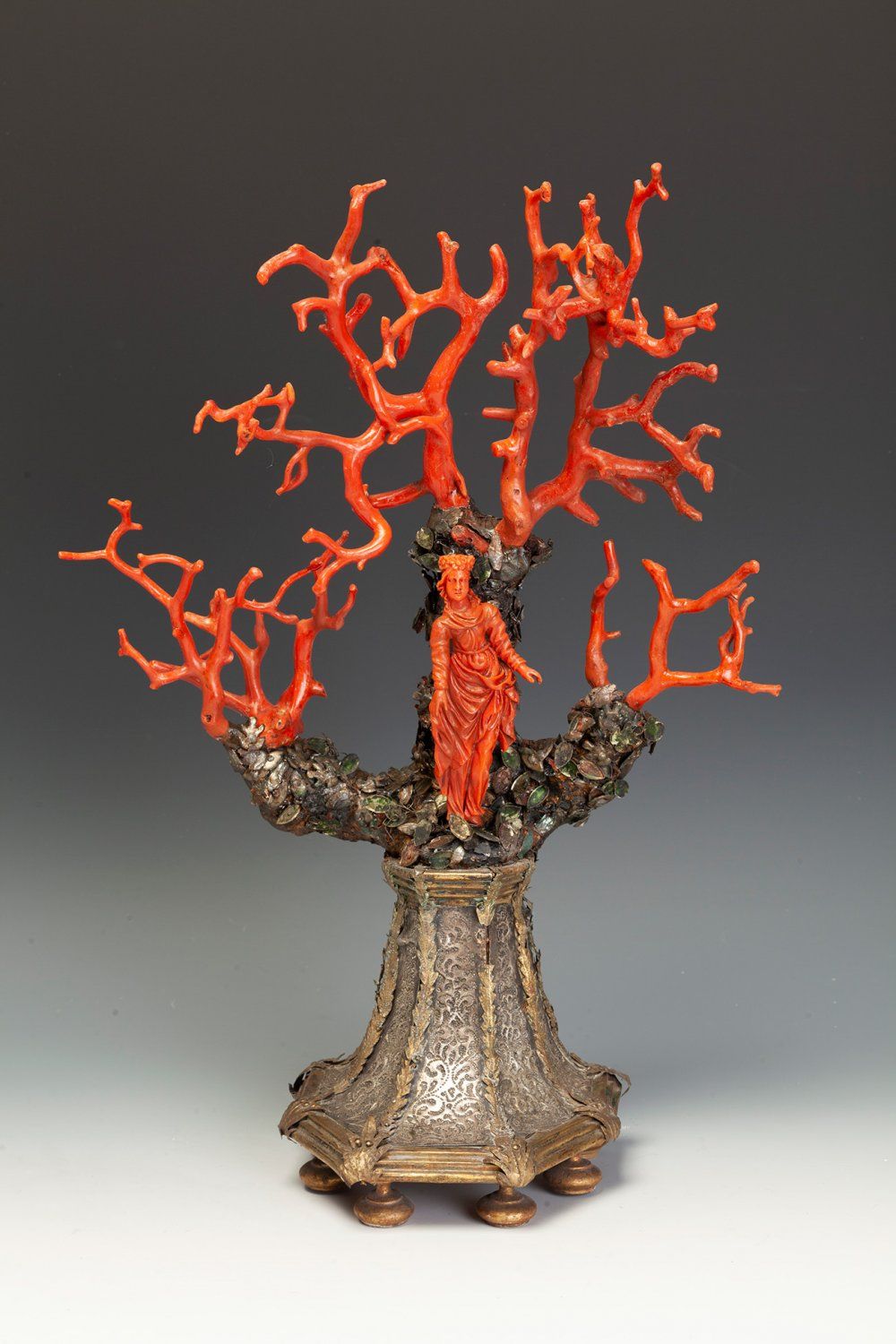Description
Group with statuette and branches in red coralinum, 17th century. Carving in red coralinum. Silver pedestal. It presents restorations in the coralinum. Measurements: 42 x 29 x 11 cm. Delicate ornamental sculpture in red coralinum carved in the shape of vegetable bushes that branch out around a central figure representing a goddess, who could be Flora, or a forest nymph. The young woman's tunic and crown of flowers have been draped and carved with subtlety. The lower part of the sculpture is made of silver, and the branches at the base are covered with rhinestones that simulate foliage. Over the centuries, the red coralinum has been attributed therapeutic powers and has been used since ancient times as a prestigious ornament, whether in Egypt, Greece or ancient China. The mandarins of China wore it as an attribute of their authority. The Turks were also very fond of coral ornaments, which they wore not only on their persons, but also in the decoration and ornamentation of their dwellings. The Greeks called coralinum korallion, meaning "ornament of the sea", and this word passed into Latin as corallium, from which the word coral was derived. But in fact, man has been fascinated by the beauty and energy of the red coral stone since prehistoric times. Archaeological excavations have shown that humans used it as early as the Palaeolithic era. The colour of the limestone shaft offers a great variety of shades ranging from red to pink and some of these colourings have a delicate and soft pink hue, the most sought after by divers. The limestone shaft is so compact and homogeneous that it can be subjected to the most perfect polishing without disintegration or cracking, a property that allows it to be worked and carved in a thousand different ways to create an infinite number of ornamental and artistic objects.
22
Group with statuette and branches in red coralinum, 17th century. Carving in red coralinum. Silver pedestal. It presents restorations in the coralinum. Measurements: 42 x 29 x 11 cm. Delicate ornamental sculpture in red coralinum carved in the shape of vegetable bushes that branch out around a central figure representing a goddess, who could be Flora, or a forest nymph. The young woman's tunic and crown of flowers have been draped and carved with subtlety. The lower part of the sculpture is made of silver, and the branches at the base are covered with rhinestones that simulate foliage. Over the centuries, the red coralinum has been attributed therapeutic powers and has been used since ancient times as a prestigious ornament, whether in Egypt, Greece or ancient China. The mandarins of China wore it as an attribute of their authority. The Turks were also very fond of coral ornaments, which they wore not only on their persons, but also in the decoration and ornamentation of their dwellings. The Greeks called coralinum korallion, meaning "ornament of the sea", and this word passed into Latin as corallium, from which the word coral was derived. But in fact, man has been fascinated by the beauty and energy of the red coral stone since prehistoric times. Archaeological excavations have shown that humans used it as early as the Palaeolithic era. The colour of the limestone shaft offers a great variety of shades ranging from red to pink and some of these colourings have a delicate and soft pink hue, the most sought after by divers. The limestone shaft is so compact and homogeneous that it can be subjected to the most perfect polishing without disintegration or cracking, a property that allows it to be worked and carved in a thousand different ways to create an infinite number of ornamental and artistic objects.
